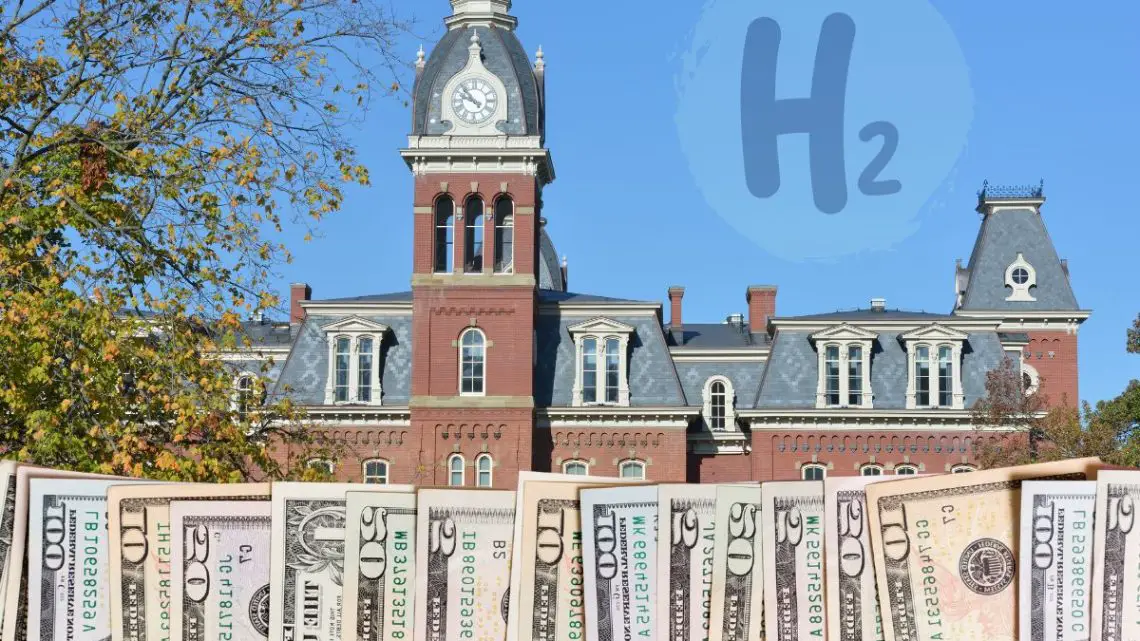
WVU engineers could cut clean hydrogen costs with help from federal funding
March 27, 2024West Virginia University (WVU) has received a total of $15.8 million to research H2 projects.
The federal funding WVU researchers received to pursue their clean hydrogen projects is part of funds authorized by the Bipartisan Infrastructure Law, a law designated to support research aimed at slashing the costs of producing clean H2 to $1 per kilogram. Three U.S. Department of Energy (DOE) grants totaling $15.8 million were awarded to WVU studies.
Improving SOEC technology.
The clean hydrogen projects that have received funding all focus on solid oxide electrolysis cell (SOEC) technology. SOECs use electrolysis, a process that splits water into hydrogen and oxygen. This process is powered by electricity, including renewable energy sources like wind and solar power to produce hydrogen.
Specifically, the projects, which are happening at the WVU Benjamin M. Statler College of Engineering and Mineral Resources, will focus on improving the design or manufacturing of this H2 tech.
Three different clean hydrogen projects with a similar goal.
One of the clean hydrogen projects will receive $9.3 million in DOE funds. Led by Edward Sabolsky, a professor in the Department of Mechanical, Materials and Aerospace Engineering, the goal of the project is to design a furnace that uses microwave energy for heat for SOEC manufacturing.

Xingbo Liu, professor, associate dean for research and Statler Chair of Engineering, who is in the same department as Sabolsky, seeks to develop a “proton-conducting” SOEC that can outperform traditional “oxygen-conducting” SOECs. Liu’s research group has received $4.5 million in funding.
Wenyuan Li, assistant professor in the Department of Chemical and Biomedical Engineering, is also focusing efforts on improving SOECs manufacturing. Li received $2 million in funds for his project, but instead of focusing on microwaves like Sabolsky, Li and his team are concentrating on a process known as “ultrafast high-temperature sintering”. This process can reach temperatures as high as 2,000°C within minutes. What makes this significant is that compared to traditional systems, Li’s design improves time efficiency and energy as well as lowers costs for capital, maintenance, and labor, all while decreasing energy consumption and carbon emissions
Will West Virginia become a leader in the hydrogen economy?
 The three WVU teams have a shared goal of developing improved SOEC systems to generate clean hydrogen that can be used in all industries currently relying on fossil power sources for transportation and manufacturing.
The three WVU teams have a shared goal of developing improved SOEC systems to generate clean hydrogen that can be used in all industries currently relying on fossil power sources for transportation and manufacturing.
According to Liu, the tech that is being developed by researchers is going to help West Virginia “leverage the natural gas” it has in the Marcellus Shale to produce “cheap, clean hydrogen.” Liu also said that the work happening at WVU will help to make the region “a leader in the hydrogen economy.”
Ready to test your knowledge on the most abundant element in the universe? Take our fun and engaging Hydrogen Quiz now! [forminator_quiz id=”58712″]



 With over 15 years of reporting hydrogen news, we are your premier source for the latest updates and insights in hydrogen and renewable energy.
With over 15 years of reporting hydrogen news, we are your premier source for the latest updates and insights in hydrogen and renewable energy.